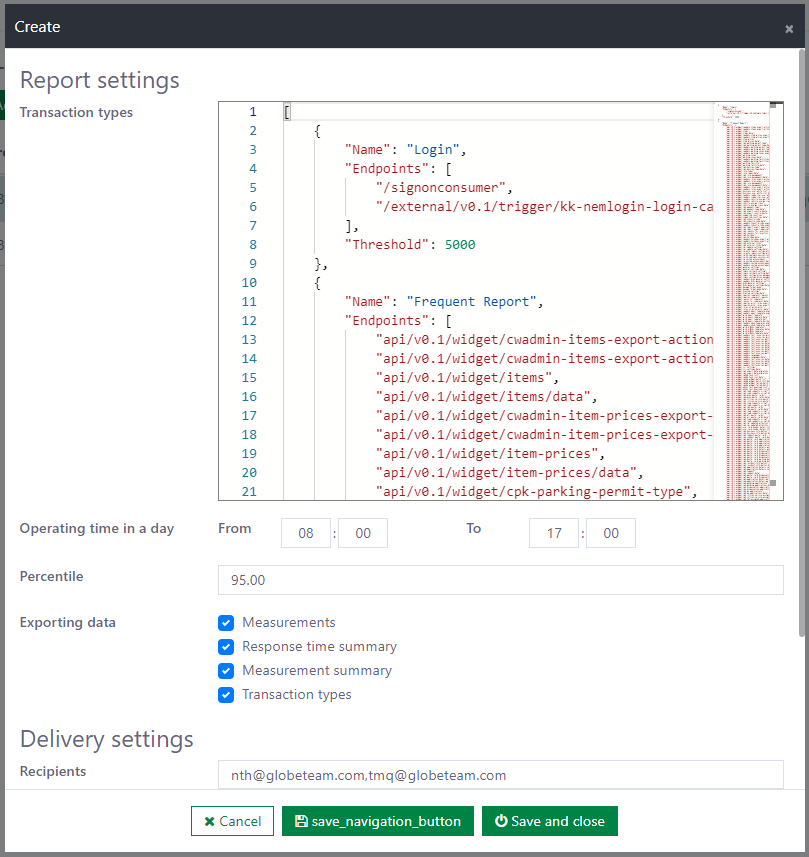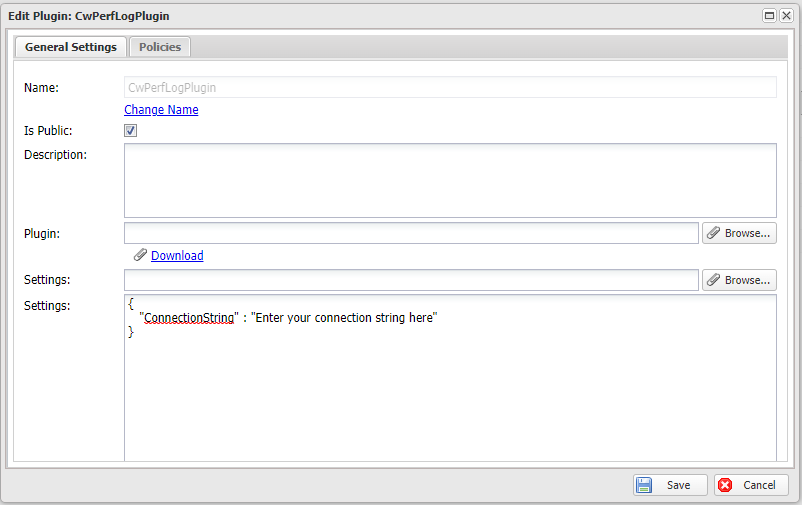Component: Performance Report
Introduction
Every product has different requirements about creating a Service Level Agreement (SLA) report. It helps to monitor the system during the operation process. There are many type of SLA reports based on their purpose. This component focuses on creating a SLA report based on the response time. So, it's built
- To create the SLA report periodically
- To deliver it automatically
A SLA report of the response time provides the following information given.
- A given list of transaction types need to measure and each transaction type can contain one more endpoints
- A response time threshold for each transaction type
- Operation time duration in a day
- A percentile (like 95%) to determine a measurement is passed or failed
Features
The component includes two main parts. The one is a plugin to be used to connect the database and calculate the measurements for the transaction types. The other is a page to manage SLA report definitions. Each definition include two sections: report settings and delivery settings
Manage SLA report definitions
Provide a list of the SLA report definition with the basic operations such as Create, Edit, Delete, Import and Export as below. You can view the basic information in each report definition like
- The operation time duration is required for transaction types,
- The percentile of measurements
- Who will receive the SLA report
- Which recurrence the report is run and delivered automatically.

To create a new report definition, the following information need to be provided
Report settings
To define what need to be measured to evaluate the operational efficiency. It includes
- Transaction types (Required): Determine a list of transaction types interested in the SLA report. Each transaction type has a name, a list of the endpoints, and the response time threshold.
- Operating time in a day (Required): Determine a duration in a day so only the endpoints happened in the duration are collected during calculating measurements.
- Percentile (Required): Determine the percentile value is used
- Exporting data (Required): Determine which data will be encompassed in the SLA report

Delivery settings
To define who will receive the SLA report when the report is created periodically. It includes
- Recipients (Required): Determine who will receive the report, even when the process of generating it is failed
- Email template (Required): Determine which email template is used when the report is generated successfully
- Recurrence (Required): Determine which interval (weekly/monthly) the report is run as planned.
- Delivery failure email template (Required): Determine which email template is used when the report is generated failed.

You can change the settings by editing an existing definition. Furthermore, you can export a list of SLA report definitions under a JSON file and share it with someone. Otherwise, you can import it from a given JSON file.
Connect to a database
The SLA report is calculated based on the data from the database. You need to change the settings of the CwPerfLogPlugin plugin, so it can connect to the proper database.

Limitations
- For each Casewhere instance, the component only can create many SLA reports against an database at the same time. It means you cannot create SLA reports with multiple databases.
- Generating SLA report is retried 3 times before an email of failure is sent to the recipient. The admin can manually retry it via the workflow monitor.
Dependencies
It depends on the following components
- Casewhere Mail
Installation
Requirements
- Casewhere 2.6.10 or later
Configuration
- Import two products: Casewhere PerfLog Plugin and Casewhere Performance Report
- Create the SLA report definition that follows the customer's requirement
- Change the plugin setting to connect the database
Releases
1.0.0 - 03/17/2022
Changelog
Download (login required): [TBD]